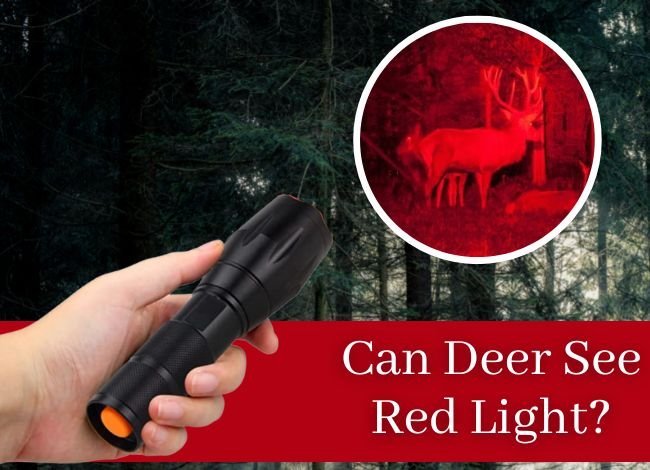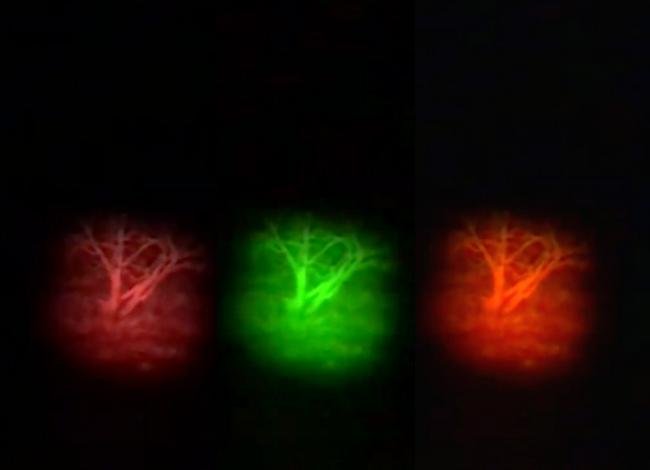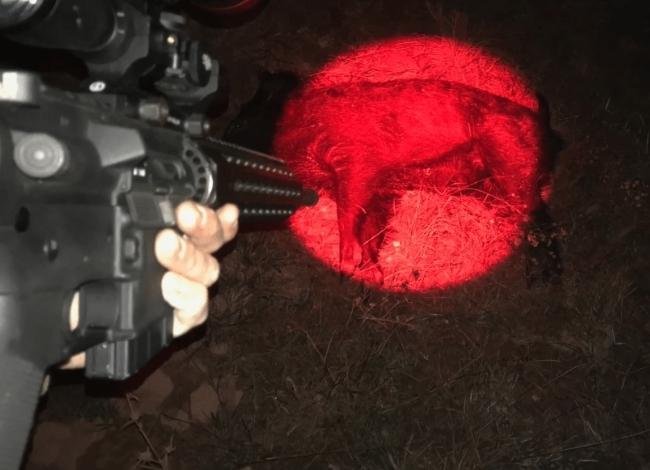Last Updated on May 27, 2025
Can Deer See Red Flashlights? [In-Depth Guide for Hunters]
 Hunting is an age-old tradition that blends patience, strategy, and the right gear. Among the many questions hunters ask, one common and critical concern is: Can deer see red flashlights? If you’re planning a nighttime hunt or early morning stalk, using the correct flashlight color can make all the difference between a successful trip and going home empty-handed.
Hunting is an age-old tradition that blends patience, strategy, and the right gear. Among the many questions hunters ask, one common and critical concern is: Can deer see red flashlights? If you’re planning a nighttime hunt or early morning stalk, using the correct flashlight color can make all the difference between a successful trip and going home empty-handed.
In this complete guide, we’ll explore how a deer’s vision works, whether they can detect red light, what colors are best for stealthy movement, and how to pick the best flashlight for deer hunting. If you’re passionate about tactical hunting gear, don’t forget to also check our best tactical flashlights guide for expert-tested options.
Understanding Deer Vision: Are Deer Colorblind?
The first step to answering “can deer see red flashlights” is to understand how deer perceive colors. Deer have dichromatic vision, which means they see a limited range of colors compared to humans. While humans have three types of cone cells (trichromatic vision) to detect red, green, and blue, deer have only two.
So, what colors can deer see?
- Blues and some shades of yellow are more visible to deer.
- Red, orange, and green appear muted or grayish, meaning deer cannot differentiate these colors well.
- According to wildlife biologists, deer are essentially red-green colorblind.
Because of this limited spectrum, red light appears very dim or even invisible to a deer’s eyes. This makes red flashlights a popular choice among experienced hunters for stealth movement during low-light conditions.
✅ Key Point: Deer are not completely colorblind, but they cannot detect red light well, making it ideal for hunting.
Can Deer See Red Flashlights?
This is the heart of our discussion. The short answer is: No, deer cannot clearly see red flashlights.
Research into deer vision confirms that red wavelengths fall outside the range of their most sensitive photoreceptors. In simpler terms, deer struggle to distinguish red from green or gray, and red light is often too faint for them to register.
Here’s what this means for hunters:
- Using a red flashlight helps you remain undetected in the woods during twilight or nighttime hunts.
- Red light preserves your night vision while allowing you to navigate trails, read maps, or check your gear.
- Since deer are unlikely to react to red light, you reduce the risk of startling your target.
If you’re exploring other options for nighttime visibility, you may also want to read our comparison of flood vs. throw flashlights to find the right beam type for different hunting conditions.
What Colors Should Hunters Use for Flashlights?
While red is the most favored color, it’s not the only viable option. Let’s break down which colors are suitable for stealthy deer hunting:
✅ Red Light
- Nearly invisible to deer
- Best for walking quietly without detection
- Maintains human night vision
✅ Green Light
- Slightly more visible to deer than red but still low-impact
- Offers better contrast than red for humans, helping identify terrain and obstacles
✅ Orange Light
- Similar to red in how it’s perceived by deer
- Less popular but still effective in maintaining stealth
⚠️ Avoid using blue or white light while hunting deer. These colors are easily detected by deer and may cause them to flee.
If you’re unsure about which beam pattern works best for various situations, visit our ultimate guide to flashlight beam types.
Can Other Animals See Red Flashlights?
Red flashlights are not just beneficial for deer hunting—they’re also popular among hunters pursuing a variety of nocturnal animals. But a common follow-up question to “Can deer see red flashlights?” is: What about other animals?
Most mammals have similar visual systems to deer, meaning they’re less sensitive to longer wavelengths of light like red. This includes:
- Coyotes
- Hogs
- Foxes
- Raccoons
These animals also have limited color perception, and red light tends to appear faint or entirely invisible to them. This explains why red light is widely used in predator hunting and night observation.
🔍 If you’re interested in predator hunting gear, check out our breakdown of best tactical flashlights with red filters that work across multiple scenarios.
Key Benefits of Red Light in Multi-Species Hunting:
- Minimizes animal detection
- Keeps your eyes adapted to the dark
- Reduces shadows and harsh contrast compared to white light
So if you’re hunting deer, hogs, or small game at night, using red flashlights provides a major advantage across species.
Do Bright Lights Attract Deer?
Let’s clarify a myth: Bright lights do not attract deer.
In fact, deer are naturally cautious animals and are more likely to flee from sudden light exposure—especially from lights they can perceive clearly, such as white or blue light.
Although the brightness of a red flashlight might seem intense to a human in the dark, deer perceive red light as very dim. Therefore:
- Red light does not startle deer
- Brightness levels in red light remain low-impact
- Using a low-lumen red flashlight helps navigate without revealing your presence
💡 Pro Tip: Use a flashlight with adjustable brightness so you can dim the light when closer to game.
Tips for Moving Stealthily While Using Flashlights
Even with the right flashlight color, poor movement can give you away. Here’s how to stay stealthy when using a red flashlight:
1. Avoid Sudden Movements
Deer have sharp peripheral vision and are quick to detect motion. Move slowly and deliberately, especially when shining your flashlight.
2. Use Low Beam Angles
Angle your flashlight beam toward the ground when walking. Avoid pointing it at eye level or directly ahead.
3. Control Switch Noise
Many tactical flashlights have “clicky” buttons. If possible, use a quiet-switch flashlight to avoid noise when turning it on or off.
4. Minimize Glare on Equipment
Make sure your gear doesn’t reflect light. Even red light bouncing off metal can signal movement.
🎯 If stealth is your goal, check out our guide to the quietest tactical flashlights for hunting and learn how to stay undetected.
How to Hunt Deer Without Getting Detected
Using the right flashlight is only one part of the equation. Even if you know the answer to “Can deer see red flashlights?” (they mostly can’t), you still need to follow essential tactics that reduce your presence in the wild.
Below are several expert-approved strategies to make your next deer hunt more successful.
1. Avoid Wearing Blue Clothing
While deer struggle with red and green, they can actually detect blue very clearly. This is because their eyes are highly sensitive to short wavelengths of light, which includes blue and ultraviolet.
🔵 Avoid: Blue jeans, blue flannel, or any reflective materials
✅ Recommended: Camouflage patterns in dull earth tones like brown, olive, or gray
If you’re shopping for outdoor gear, make sure to avoid UV-reactive materials. UV brighteners used in laundry detergents can also reflect light more visibly to deer.
2. Move Quietly and Avoid Leg Shuffling
Deer have incredibly sensitive ears. Even small movements—like rustling leaves, cracking twigs, or shuffling your feet—can spook a deer long before it sees you.
🦌 Tip: Walk heel-to-toe, softly, and avoid stepping on twigs.
Deer can detect low-frequency noises better than humans, which means whispers, clothing rustling, or gear noise can alert them.
3. Use Red, Orange, or Green Flashlights
As we’ve already established, deer do not see red flashlights clearly. The same applies to orange and green in many situations, as these colors appear more grayish or muted to them.

Here’s a quick comparison:
| Light Color | Visibility to Deer | Ideal Usage |
|---|---|---|
| Red | Very Low | Best for stealth and preserving night vision |
| Orange | Low | Good alternative for color contrast |
| Green | Moderate | Good visibility for the hunter, acceptable for deer |
| Blue | High | Avoid completely |
| White | Very High | Avoid completely |
Want to learn more about beam types? Check our detailed flashlight flood vs throw comparison to understand what beam is best for different terrain types during hunts.
4. Train With Experienced Hunters
No matter how advanced your gear is, real-world skills come from experience. If you’re new to deer hunting or struggling to get results, connect with someone who’s been doing it for years.
🎯 Bonus Tip: Attend local hunter safety courses, watch YouTube field tutorials, and practice movement drills in realistic environments.
Becoming a skilled hunter isn’t just about gear—it’s also about reading animal behavior, wind direction, trail signs, and terrain types.
How to Choose the Best Red Flashlight for Deer Hunting
By now, we’ve answered the critical question—Can deer see red flashlights? And you know red light helps you move undetected. But not all red flashlights are created equal. To be successful in the wild, your flashlight must do more than just shine red—it needs to be reliable, quiet, and durable.
Let’s break down the most important features to consider when selecting your deer hunting flashlight.
1. Power Endurance: Battery Life Matters
Long hunting sessions can last several hours or even overnight. If your flashlight dies in the middle of a stalk or during tracking, it could ruin your chances.
Look for:
- Long battery life (at least 8–12 hours runtime on low/red mode)
- Rechargeable or replaceable batteries
- Power-saving modes or automatic dimming
🔋 Pro Tip: Carry spare batteries or a backup flashlight. Check out our best tactical flashlight picks to find models with excellent endurance.
2. Red Light Mode with Easy Access
Many flashlights offer multiple color modes, but not all make it easy to switch between them quickly. A good hunting flashlight should let you:
- Instantly activate red light mode (preferably with a dedicated button)
- Switch between brightness levels without cycling through white light
- Lock the mode to prevent accidental changes
🎯 When hunting, accidentally switching to white light can alert your target immediately. Avoid multi-mode flashlights without mode memory.

3. Adjustable Brightness (Lumens)
For hunting, you don’t need a blindingly bright flashlight. In fact, too much brightness—even in red—can create reflections, harsh shadows, or backlighting that compromises your stealth.
Ideal flashlight brightness settings for red light:
- Low (1–5 lumens): Navigating quietly
- Medium (10–20 lumens): Reading maps or adjusting gear
- High (30–50 lumens): Emergency signaling or tracking blood trails
💡 Avoid overpowered lights with no control over brightness. Look for tactical models that support stepped or smooth dimming.
4. Tactical and Simple Design
During a hunt, you need to operate your flashlight with one hand—sometimes even gloved. A good flashlight should have:
- Ergonomic body design for a secure grip
- Non-slip surface or knurling
- Few, well-labeled buttons for quick control
- Silent or soft-click switches to reduce noise
Avoid flashlights that feel like a puzzle in the dark. Simple operation saves you from fumbling—and from scaring off deer.
5. Durable and Weatherproof
You’ll face unpredictable weather, rough terrain, and sometimes wet or snowy conditions. That’s why your flashlight should be:
- Water-resistant or waterproof (IPX4 to IPX8 rating)
- Shock-resistant and impact-tested
- Built from aircraft-grade aluminum or strong polymer
🛠️ Flashlights built for tactical use typically survive drops, rain, mud, and snow. Explore our tactical flashlight reviews to compare rugged models.
Quick Comparison Table: What to Look for in a Hunting Flashlight
| Feature | Why It Matters | Ideal Specification |
|---|---|---|
| Battery Life | Lasts all night without failing | 8+ hours in red mode |
| Red Light Mode | Keeps you hidden from deer | Instant-on or dedicated red mode |
| Adjustable Brightness | Prevents startling animals | 1–50 lumens in red mode |
| Design Simplicity | Helps quick one-handed use | Minimal switches, memory mode |
| Durability | Survives harsh outdoor conditions | IPX7+ waterproof, impact-tested |
Final Thoughts: Can Deer See Red Flashlights?
So—can deer see red flashlights?
The simple answer remains: No, not clearly.
Due to their dichromatic vision, deer have poor sensitivity to red wavelengths. This makes red flashlights one of the best tools for hunters trying to stay concealed in low-light conditions. While deer are quick to detect movement and noise, they’re far less likely to notice a soft red glow coming from your gear—especially when used correctly.
But success in deer hunting goes beyond just choosing the right light color. It also requires:
- Wearing non-reflective, camo-colored clothing (not blue)
- Moving slowly and silently
- Using high-quality, easy-to-operate flashlights
- Practicing smart field strategies with experienced hunters
When all of these elements come together, your chances of having a successful hunt increase dramatically.
Summary: Key Takeaways
Let’s recap what we’ve covered in this in-depth guide.
| Topic | Key Insights |
|---|---|
| Can Deer See Red Flashlights? | No—red light is poorly perceived by deer, making it ideal for stealth. |
| Other Animals & Red Light | Most nocturnal animals (like hogs, coyotes) also struggle to see red. |
| Bright Lights & Deer | White and blue light can startle deer; red does not attract or spook them. |
| Best Hunting Practices | Avoid noise, don’t wear blue, use red/orange/green flashlights. |
| Flashlight Buying Tips | Look for long battery life, red mode access, quiet operation, and weather resistance. |
✅ Bottom Line: Red flashlights give you an edge—not because they make you invisible, but because they let you blend in just enough to stay undetected.
Related Reading and Internal Resources
To help you hunt smarter, here are some internal guides we recommend:
You can also explore more flashlight reviews by brand:
Final Words
The answer to “Can deer see red flashlights?” may seem like a small detail, but for serious hunters, it can define success. Using red light properly lets you blend into the environment, stay hidden, and track or approach game silently.
Invest in the right flashlight. Train with purpose. And respect the wild.
🦌 Happy hunting—and stay safe out there.